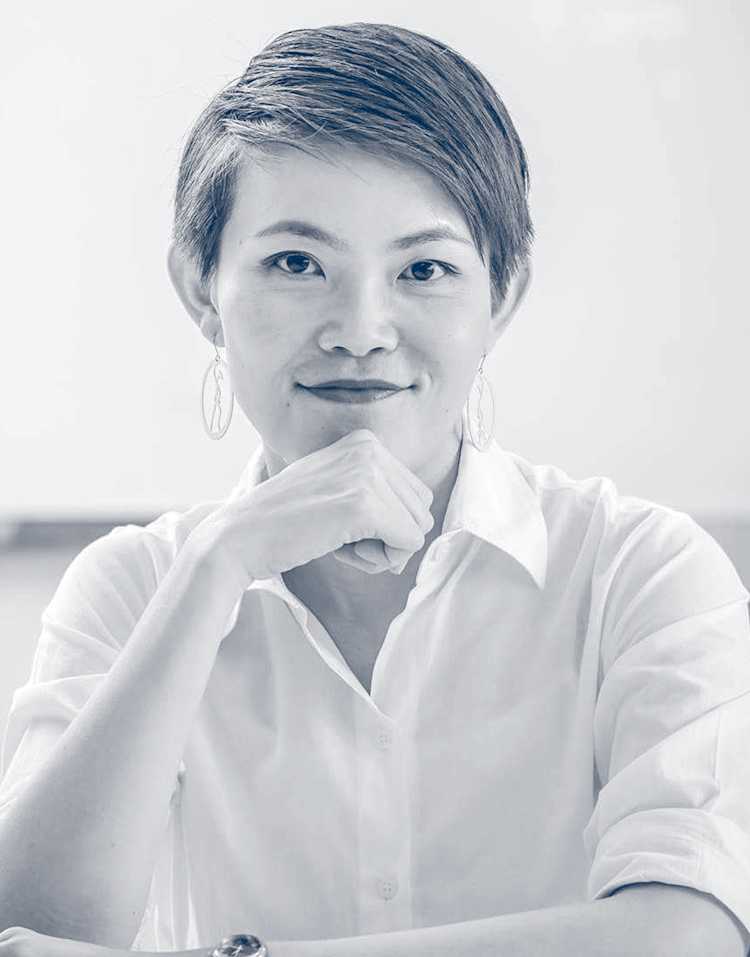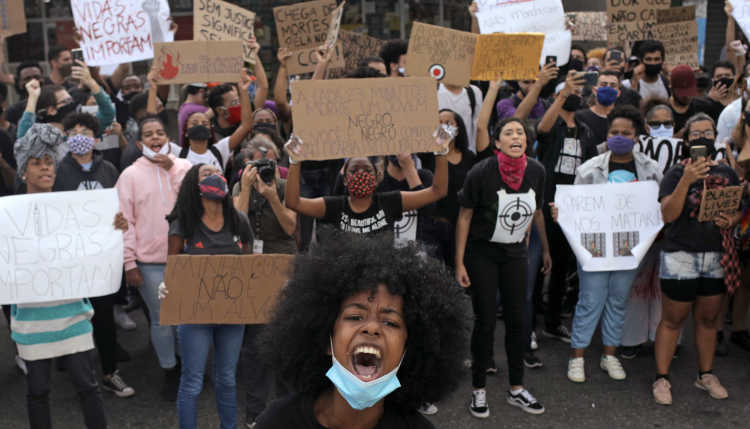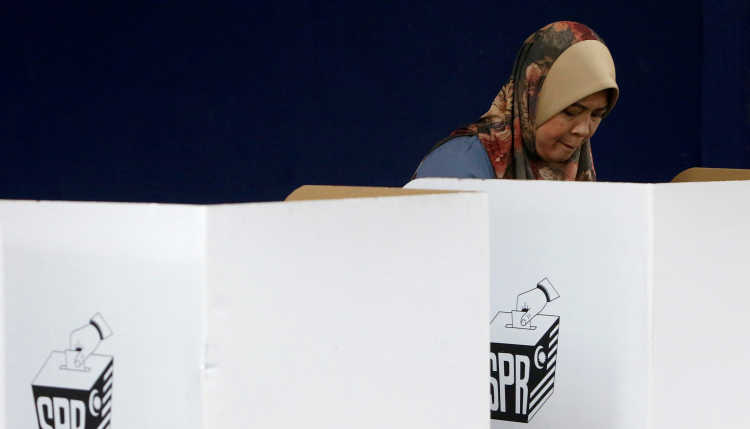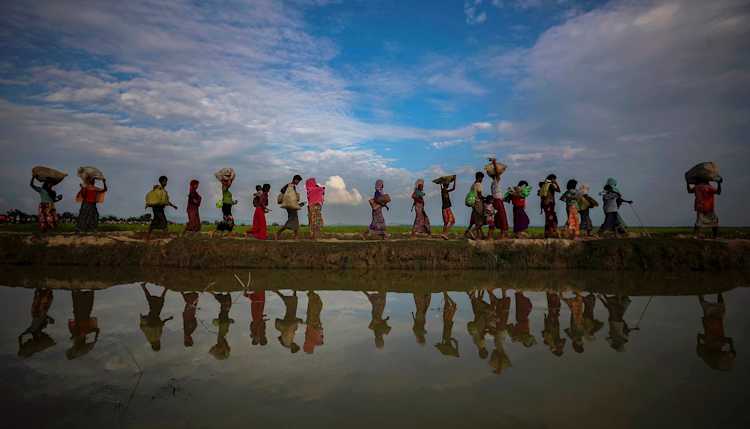- Home
- Publications
- GIGA Focus
- From Repression to Revolt: Thailand’s 2020 Protests and the Regional Implications
GIGA Focus Asia
From Repression to Revolt: Thailand’s 2020 Protests and the Regional Implications
Number 1 | 2021 | ISSN: 1862-359X

A democratic revolt erupted in Thailand in summer 2020 against shrinking civic space due to persisting autocracy and COVID-19-related restrictions. At their peak, the youth-led demonstrations attracted almost 100,000 participants whose demands targeted Thailand’s most sacred institution: the monarchy. The protests have fanned democratic aspirations in Southeast Asia, prompting many to celebrate the advent of a “Southeast Asian Spring.”
Before the pandemic, Thailand had already wrestled with a hybrid regime that represses civic space. The regime has weaponised draconian laws to stifle dissent, while unleashing disinformation campaigns to discredit the opposition.
With the COVID-19 outbreak, opportunities for mass mobilisation have arisen. Despite the regime’s effective containment of the pandemic, its poor economic management and an absent monarch have fostered grievances conducive to mass protest.
From July to December 2020, diverse civic networks staged the largest and longest protests since the 2014 coup. Protesters drew on various tactical innovations to push back against regime repression and voice democratic demands, including monarchy reform.
Thailand’s protests have become a regional sensation by inspiring similar pro-democracy struggles in Laos, the Philippines, Indonesia, and recently Myanmar. These protests largely responded to regime threats to civil society.
Despite this regional spillover precipitating democratic optimism, Southeast Asian autocratic regimes remain resilient. Whether regional democratisation can transpire partly depends on civil societies’ strategic breakthroughs.
Policy Implications
As Thailand is a test case for pushback against a trend of shrinking civic space in Southeast Asia, European policymakers, aid agencies and political foundations can play a role in fostering a grassroots network of regional solidarity. They can work with emerging pan-Asian democratic alliances in order to strengthen necessary infrastructures and foster coordination across groups. For this support to be discreet, capacity-building activities that focus on knowledge exchange, networking, and collaboration could be less politically charged – thus avoiding regime allegation of “Western meddling.”
Repressed Civic Space: Thailand’s Hybrid Regime and Tactics of Repression
After two episodes of military coup in 2006 and 2014, Thailand has plunged deeper into a military-palace-led autocracy that employs a myriad of tactics to repress the oppositional civil society. The military–monarchy nexus has dominated the country’s political landscape despite brief democratic intervals in the 1930s, 1970s, and 1990s. Particularly the 1990s democratic opening empowered new political forces, including the Thai Rak Thai (TRT) party and its constituents in Thailand’s most impoverished regions. However, this rise distressed establishment elites who then moved to depose the TRT-led government through the 2006 military coup.
This set the stage for a period of turbulence in which the establishment and anti-establishment camps engaged in tit-for-tat street protests to oppose governments representing their respective antagonists in 2008, 2009–2010, and 2013–2014. Led by staunch supporters of the establishment, the 2013–2014 mass demonstrations gave ground to the most recent military coup. The five years of military rule that followed uprooted what remained from the 1990s democratic opening, while ensuring the staying power of establishment elites. Armed with this confidence, the regime agreed to national elections in March 2019. Through constitutional and electoral manipulations, its proxy the Palang Pracharat Party outperformed the TRT-affiliated Pheu Thai Party electorally, and thus currently leading the ruling coalition. The Thai regime is, at present, hybrid. It harbours key features of competitive authoritarianism such as manipulated elections and aggrandised executive power through constitutional manoeuvre and influence over the Constitutional Court and Election Commission. Meanwhile, the incumbent retains some dictatorial modus operandi by preserving the senatorial quota for military commanders and employing extensive military power to stifle dissent.
These regime characteristics inform tactics of repression that, until mid-2020, had successfully precluded large-scale anti-establishment demonstrations. First, the regime weaponises a host of draconian laws by charging leading dissidents on several counts in an attempt to prevent effective anti-regime mobilisation. This tactical piling up of legal charges enables the police to detain activists in perpetuity: as soon as the court acquits an activist of one charge, the police would file another lawsuit to re-detain that individual. Meanwhile, dissidents facing multiple charges end up expending their time and money on a drawn-out judicial process. The tactic is also applied to ordinary citizens, whose low-profile activism such as sharing a Facebook post can carry serious penalties. The aim is to generate a “chilling effect” through what is known as the Strategic Lawsuit Against Public Participation. Draconian laws commonly used include Article 112 of the Criminal Code on offence against the monarchy; Article 116 of the Criminal Code on sedition; Criminal Code, Sections 326 to 333 on defamation; Computer-Related Crime Act or CCA; Emergency Decree (currently related to the COVID-19 pandemic); and martial law (previously imposed after the 2014 coup) (Sombatpoonsiri 2020).
Another tactic entails online surveillance and disinformation campaigns. Online surveillance works in tandem with weaponised draconian laws, especially the CCA, which licenses the authorities to block Internet content threatening national security – and to punish those alleged to distribute it. In reality the CCA is often used against palace critics, thus interlinking online surveillance with a weaponised Article 112. In 2012, for instance, court orders effectively blocked more than 74,000 URLs considered royally offensive. Meanwhile, the authorities charged hundreds of Facebook users critical of the monarchy between 2014 and 2018 (Human Rights Watch 2019). Facilitating such extensive lawsuits is an array of cyber troops – from the police’s “Cyber Scouts” to the army’s Information Operation units – that monitor social media conversations day in, day out. Apart from surveillance, these units engage in state-sanctioned disinformation campaigns that create and reinforce online messages favourable to the establishment and unfavourable to the opposition (Sombatpoonsiri 2021).
The last key tactic regards the use of force. Although the regime increasingly opts for the “unarmed,” legal suppression of internal dissent, forced disappearance remains common among activists in exile. Between 2014 and 2020, at least nine Thai activists who were charged under Article 112 and sought refuge in Cambodia, Laos, and Vietnam went missing – with the bodies of two of them found floating in Laos’s Mekhong River, their stomachs stuffed with concrete (Reuters 2019). The most recent such case concerned the disappearance of the 36-year-old activist Wanchalerm Saksatsit in Cambodia that sparked questions regarding Article 112 and helped ignite mass demonstrations from July to December 2020.
COVID-19 and Protest Onset
The pandemic presents both a challenge and an opportunity for Thailand’s pro-democracy groups. On the one hand, the regime would use the health crisis as a pretext for imposing the Emergency Decree on 26 March 2020 – renewed nine times as of February 2021. Accordingly, civic space is reduced as all types of public gathering are banned; critics of the government response to the pandemic risk lawsuits.
On the other hand, COVID-19 creates at least two structural opportunities for pro-democracy groups. First, although the Thai public health sector’s response to the pandemic has been effective, leading to a relatively low number of COVID-19 cases (around 25,000 infections and 82 deaths as of 18 February 2021, out of a populace of 69 million), the regime has poorly managed the economic repercussions of two related lockdowns (March–April 2020 and January–February 2021). As millions lost their jobs, the government aid provided to them would be seen as too little, too late – especially compared to its enthusiasm to save big businesses. In light of Thailand’s existing economic disparity, this different treatment of the “haves” and “have-nots” reinforces the perception of elite privilege. For youngsters especially, economic inequality conducive to a lack of opportunities makes it seem that they do not have a bright future in Thailand.
Second, the health and economic crises set the stage for public questioning of royal power. Different from his late father, King Bhumibol, whose moral image sustained royal legitimacy, King Vajiralongkorn’s departure from this path has started to raise eyebrows. At the centre of growing public criticism are his luxurious and eccentric lifestyle in Germany; his vast personal wealth (between EUR 24 and 57 million); and, the fiscal budget allocated to annual royal expenses (as of 2020, EUR 35 million) (Weedon 2020). Pro-democracy activists link such wealth to increasing royal power, potentially undermining what is a constitutional monarchy. For them, democratic reform of the monarchy is deemed necessary for democratising the country at large.
Mass Revolt and Pushbacks against Repressed Civic Space
Two events were the final straws triggering the 2020 mass protests. The first was the dissolution of the Future Forward Party (FFP). The party embodies the anti-establishment camp, but is considered to be more vocal than the TRT in terms of its democratic agenda. While royalists portray the FFP as advocating for republicanism, the younger generation associates it with a hopeful future. As such, the FFP attracted 6.3 million of a possible 53 million votes in the March 2019 election. Anxious that it would threaten the status quo, the establishment decided the FFP had to go. In February 2020 the Constitutional Court disbanded the party for obscure reasons, sparking protest across more than 50 university campuses and high schools.
The second trigger was the disappearance of Wanchalerm in July 2020. Soon after the news broke, social media campaigns called to #saveWanchalerm and #abolishArticle112. These small gatherings subsequently escalated into a larger political movement that demanded the government and authorities stop harassing citizens, plus amendment of the current constitution and reform of the monarchy. Corresponding with these demands was the three-finger salute protesters took from the Hollywood blockbuster The Hunger Games, being the anti-dictatorship symbol. Between July and December 2020, around 350 protest events erupted across Thailand, with major ones attracting between 20,000 and 100,000 protest-goers.
Through decentralised organisation, technological savviness, tactical creativity, as well as flexibility and nonviolent discipline, leading protesters could push back against repression and carve out a space for mass mobilisation. The 2020 protests were “networked,” in the sense that diverse civic groups were loosely coordinated while still retaining autonomy vis-à-vis initiating and designing protest actions. The organisational evolution of networked protests is threefold. First, in July 2020, different university clubs from Bangkok and regional campuses formed core organisers under the name “Free Youth” (Yaowachon plod-aek). By August 2020, second, diverse groups banded together in two movements: Free People (Prachachon plod-aek) and Thammasat University for Demonstration Group (Thammasat lae karn chumnum). This period saw broader participation by high school students, an LGBTQI network, artists, and labour unions.
The third and last phase of organisational development started in mid-October 2020, when these two movements merged under the new title People’s Party (Khana Ratsadorn). Despite this seemingly unified structure, leading activists were multiple. When leading members were arrested, protest participants were encouraged to coordinate among themselves instead. This tactic proved effective after protesters interrupted a royal convoy on 14 October, with the detention of main organisers and the police dispersion of a follow-up gathering occurring the day after. Sustaining political momentum, remaining organisers announced that “we are all leaders today” – prompting individuals to organise events in convenient localities. Thanks to these autonomous protests, street dissent proliferated despite the police crackdown.
Regarding technological savviness, the youth-led protests devised social media platforms to enhance mass mobilisation, circumvent repression, and influence public discourse. Home to more than six million Thai users, with most being in their 20s, female, and Korean pop fans, Twitter is young protesters’ primary choice of networking site. Particular hashtags were created to publicise events (e.g. #TagYourFriendsToJoinMob) and fundraise; galvanise ideas for “hip” and “cool” protest activities (e.g. #IdeasForMob); and, draw international attention to the protests (e.g. #WhatsHappeningInThailand).
Twitter was especially useful in reversing the effect of repression. Upon arrests of leading activists, Twitter users created hashtags such as #SaveRung (the name of a leading activist), calling for supporters to gather in front of the appropriate police stations to demand their release. This tactic might not have often led to the authorities immediately complying, but it capitalised on regime repression to increase publicity – creating a new opportunity for protest. Moreover, in response to state-sponsored online disinformation, a Twitter user started the account @IOwarningbotTH providing an ongoing list of accounts and hashtags suspected of being involved (Thomas, Beattie and Zhang 2020).
Facilitated by decentralised organisation and technological savviness, movements’ tactical creativity and flexibility enabled effective responses to the crackdown. Protesters identified their activities as “flash mobs” – a short-lived but highly visible form of dissent. To achieve this, activists incorporate satire and urban pop culture into their protest actions to appear less controversial, and to bypass the ban on public assembly. For instance, in July 2020, the Bangkok metropolitan authorities placed numerous flower pots around the Democracy Monument to obstruct mass gathering there. Activists responded by inviting people to visit this urban flower garden, and collectively shouted “Such a beautiful garden!” 10 times. By adapting the Japanese manga “Hamtaro,” high school students ran around in one public place as if they were hamsters (like the manga character) – thus claiming they were just jogging, not protesting. Elsewhere, critics of the monarchy could initially voice their concerns publicly in a protest event where they donned outfits to resemble characters from Harry Potter.
Likewise, tactical flexibility was crucial especially in response to security forces’ crowd control. By monitoring protesters’ social media feeds, authorities could pursue the tactic of “kettling” – limiting large groups’ entrance to a designated protest site and dispersing the small crowd trapped inside. In response, protesters opted for the tactic of deception – modelled on Hong Kong activists’ “Be Water” approach. A few hours before an event was due to begin, organisers would announce a change of venue or cancel altogether. Because most young protesters constantly checked their social media feeds, this sudden change did not create significant hassle; they could conveniently take public transport and head to a new venue, or roam a mall instead if the event got called off entirely. However, for the authorities this deception caused a headache. In the heavily congested traffic of Bangkok, oversized vehicles bussed in by the police usually failed to reach the newly announced venue before the flash mob was over.
Lastly, protesters’ general commitment to nonviolence contributed to sustaining the movements’ credibility throughout. Thailand’s divisive protests between 2006 and 2014 had partly been characterised by street clashes, which set the scene for two military interventions. Meeting these challenges, protesters sought to uphold nonviolent nature of their activities. First, “peacekeepers” were recruited to provide security checks at protest sites, form human chains during rallies, and to communicate with the authorities. When tensions between these peacekeepers and royalist supporters threatened to escalate into a street fight, key organisers decided to disband the peacekeeping units. Second, activists employed a wide range of nonviolent methods of persuasion and non-cooperation (Kri-aksorn 2020), while keeping at bay hot-headed protesters who sought to retaliate against the police. Emphasising that “nonviolent discipline” is key to winning over the general public, organisers sometimes called off certain activities potentially triggering street clashes. Through a series of trainings in strategic nonviolence, protesters developed unarmed responses to authorities’ use of water cannons and tear gas – including the repurposing of large inflatable yellow rubber ducks as shields.
Despite the merits of these tactical innovations, there remained challenges. In response to large-scale protests, the regime combined carrots and sticks by invoking draconian laws – especially Article 112 – and offering to address protesters’ demands. Regarding the latter, a committee overseeing the constitutional amendment was established in November 2020. However protesters viewed this as mere lip service, as most members of such a committee are pro-regime. The security forces tried the forcible dispersal of protests a few times, but it backfired. Eventually the regime mobilised royalist supporters, including the right-wing Thai Bhakdi group, to counter anti-establishment protesters. The latter were accordingly caught up in a battle on two fronts. Without substantive armed repression or actual concession, the regime waited out the protests losing momentum – which they did in the run up to Christmas 2020.
Regional Spillover of the Thai Protests
The protests would become a regional sensation by inspiring similar pro-democracy struggles in Southeast Asia at large. Although seven of the total 11 members of the Association of Southeast Asian Nations are identified as flawed democracies (with Cambodia, Laos, Myanmar, and Vietnam classified as authoritarian), a closer look at these regimes may indicate otherwise. That is, while elections might be held in Thailand and Singapore, the uneven playing field makes genuine contestation of dominant parties nearly impossible in both. Malaysia’s newly earned democracy proved short-lived as the ruling coalition that was once the opposition collapsed in 2020 in the face of old elites’ lingering leverage. Meanwhile, the quality of democracy in Indonesia and the Philippines is eroding as incumbents consolidate their power at the expense of checks and balances.
Many Southeast Asian regimes’ hostility towards civil society reflects this lack of democratic credentials. In 2020, civic space in Vietnam and Laos was identified as closed; in Brunei, Cambodia, Myanmar, and Thailand as repressed; and, in the rest – East Timor, Indonesia, Malaysia, the Philippines, and Singapore – as obstructed (CIVICUS 2021). In most Southeast Asian countries, draconian laws – from defamation and sedition ones to various versions of cyber laws and the Anti-Terror Act – are weaponised to strangle and criminalise oppositional civil societies. Meanwhile, non-governmental organization (NGO) laws have been imposed in Cambodia, Laos, Malaysia, and Vietnam to regulate and restrict their international funding. There is also reason to believe that recent incidents of the arrest and/or forced disappearance of activists exiled in Cambodia, Laos, Malaysia, Thailand, and Vietnam could not have transpired without interstate cooperation (Johnson and Wongcha-um 2019).
Against this backdrop, a grassroots pro-democracy alliance is emerging in Southeast Asia and in Asia as a whole – with Thailand’s 2020 protests contributing thereto. Prior to the Thai demonstrations last year, #MilkTeaAlliance trended on Twitter in April 2020 as a pan-Asian democratic response to authoritarian encroachment. In 2019, Thai student activists organised solidarity protests for their Hong Kong peers and for Laotian activists. The Thai youth protests, with their international hashtag #WhatsHappeningInThailand, sparked similar initiatives elsewhere – especially in Laos, where #IfLaosPoliticsWasGood (replicating #IfThaiPoliticsWasGood) went viral. One Laotian digital activist thinks that “Laos can learn from Thailand. The Thai movement is creating inspiration for Laotians to stand up and ask for their rights” (Chia 2020). However, in the Communist Party-ruled Laos, switching from digital to offline activism is highly risky; dissent thus remains in the form of hashtags online.
In contrast, in the Philippines – where Rodrigo Duterte’s war on drugs has killed tens of thousands – the Thai protests inspired an offline gathering against his anti-terror law of June 2020. The focus was the mistreatment of Reina Mae Asis Nasino – an activist arrested under this law, jailed while pregnant, and separated from her child soon after the latter’s birth. For some Philippine dissidents, the Thai protests reminded them of what happened with the Arab Spring and that there remains hope for democratic change. Similarly, Indonesian activists looked to the Thai protests when resisting the Omnibus Law proposed by President Jodo Widodo in 2020 to relax 79 of the country’s business, labour, and environmental laws. As Indonesian protests spiralled into vandalism, activists there hoped that they could follow the Thai model of peaceful protest (Chia 2020).
As Taiwan and Hong Kong are a part of the #MilkTeaAlliance, activists from the two countries sometimes meet with Taiwan-based students from Malaysia, Singapore, and Thailand to discuss future collaboration. Especially in Taiwan, Thai students there formed the Taiwan Alliance for Thai Democracy, and, in parallel with protests in Thailand, held a series of demonstrations in Taipei which Taiwanese and Hong Kong activists attended in solidarity. In October 2020, Taiwanese NGOs and political parties held a press conference in support of Thailand’s pro-democracy struggle (McCartney 2020). Meanwhile, prominent Hong Kong activist Joshua Wong submitted a letter to the Thai Consulate in Hong Kong to express solidarity with the Thai movements. Beijing took note of this transnational network, but has not (yet) responded substantively.
As the latest member of the #MilkTeaAlliance, Myanmar’s anti-coup protesters are in synergy with the Thai movements. Protesters there adopt the three-finger salute that earlier appeared in the Thai protests. Several online and offline tactics resonate with those of Thai activists last year, including the use of #WhatsHappeningInMyanmar, the translation of protest leaflets into different languages, and the incorporation of pop icons, humour, and LGBTQI symbolism into protest banners. For many Myanmar activists, what happened in Hong Kong and Thailand influence their protest repertoires (Reuters 2021). But the inspiration is mutual. For Thais, the latest coup in Myanmar is a horrendous revisiting of their own previous experiences therewith – thus prompting solidarity protests together with Myanmar students and workers living in Thailand on 1 and 10 February 2021. Despite having lost momentum, the anti-establishment movements in Thailand have recently been reinvigorated thanks to civil resistance in Myanmar.
A Chance for a “Southeast Asian Spring”?
Southeast Asia is at a crossroads. Thailand’s 2020 protests might have showcased the possibilities of pushback against autocratic repression, but whether they will catalyse democratisation in the region, in the sense of a “Southeast Asian Spring,” is an entirely different ballgame. This depends on the ability of human agency to overcome the structural factors nurturing anti-democratic propensities in Southeast Asia. These include weak state capacities, legacies of past authoritarian regimes and developmental-state trajectories, deepening economic inequality, political, ethnic, and religious polarisation conducive to weak social cohesion and unresolved armed conflicts, the entrenchment of predatory elites, and low public support for democratic institutions and values. The persistence of these structural predicaments has effectively undone the grassroots-driven democratisation that transformed the Philippines in 1986, Thailand in 1992, Indonesia in 1998, and Malaysia in 2018, while precluding similar processes from occurring in intractable autocracies such as Cambodia, Laos, and Vietnam.
Overcoming such challenges is an immense task, potentially dimming the prospects of bottom-up democratic transformation. Recognising this difficulty, however, does not imply the improbability of addressing some of these issues detrimental to democratic sustainability. Civil society can ignite democratic change through strategic reconfigurations that create broad-based buy-in for democratic institutions. They would need to link democratic aspirations to questions of economic redistribution, governance, and security, discursive fields largely dominated by autocratic regimes. Ultimately, strategic innovations would induce a structural shift in power relations between deep-rooted autocratic actors and pro-democracy civil society.
International Support for Regional Solidarity
Thailand is a test case for civic pushback against autocratic repression in Southeast Asia. European policymakers, aid agencies, and political foundations can play a role in fostering a grassroots network of regional solidarity in different ways. First, European actors could work with Asian organisations that have already supported civil societies in the region to buttress a regional alliance that effectively counters repression. The #MilkTeaAlliance described earlier is a promising example of a pan-Asian democracy initiative. Originating on Twitter, #MilkTeaAlliance is still lacking offline infrastructures that would concretise cross-border pushbacks against an event of repression in the region – beyond mere social media campaigns and sporadic solidarity protests. Meanwhile, academic and NGO networks facilitated by South Korea and Taiwan provide critical resources for grassroots movements’ responses to autocratic crackdowns. Bridging these formal networks with informal – often ad hoc – civic movements such as those in Thailand and, currently, in Myanmar, however, requires better coordination and most importantly a common vision.
European policymakers, aid agencies, political foundations, and civic organisations could help address these challenges by facilitating a cross-group, cross-national platform. They can share European experiences and expertise as to the ideal contours of a regional civic front that in the past has effectively counteracted autocratic encroachment. At the same time, in avoiding autocratic backlashes against what can be interpreted as “Western meddling,” support should appear less politically charged than classic international democracy-promotion. Capacity-building activities that focus on, for example, civic education, environmental protection, gender justice, and digital governance can serve to bring together civic society actors in Southeast Asia without alarming the ruling regimes. This is to carve out a safe space that allows Southeast Asian civic groups to exchange strategic insights and tactical knowledge, forge a regional network, and work together on a blueprint for concrete regional responses to autocratic repression.
Despite the importance of pushing back against shrinking civic space, any long-term solution will necessitate enlarging the democratic space: thus the making of a Southeast Asian Spring. European support for regional solidarity needs to be more proactive and holistic. Engagement with civil society should be extended to oppositional political parties, business sectors, and moderate regime actors willing to form a broad-based coalition for democratic change.
Footnotes
References
Chia, Jasmine (2020), Thai Protests and the Possibility of a Southeast Asian Spring, in: Thai Enquirer, 30 October, www.thaienquirer.com/20238/thai-protests-and-the-possibility-of-a-south-east-asian-spring/ (12 February 2021).
CIVICUS (2021), State of Civil Society Report 2020, www.civicus.org/index.php/state-of-civil-society-report-2020 (12 February 2021).
Human Rights Watch (2019), To Speak Out is Dangerous: Criminalization of Peaceful Expression in Thailand, 24 October, www.hrw.org/report/2019/10/24/speak-out-dangerous/criminalization-peaceful-expression-thailand (23 January 2021).
Johnson, Kay, and Panu Wongcha-um (2019), Unholy Alliance? SE Asian Authorities Accused of Trading Exiled Activists, in: Reuters, 21 June, www.reuters.com/article/cnews-us-asean-summit-rights-idCAKCN1TM1EI-OCATP (12 February 2021).
Kri-aksorn, Thammachart (2020), Nonviolent Action: Ratsadorn Protesters Use 91 out of 198 Methods of Nonviolent Action in 2020, in: Prachatai, 16 December, https://prachatai.com/journal/2020/12/90843 (10 February 2021).
McCartney, Micah (2020), Green Party Taiwan, NGOs Hold Press Conference in Solidarity with Thailand’s Pro-Democracy Protesters, in: Taiwan News, 22 October, www.taiwannews.com.tw/en/news/4035528 (16 February 2021).
Reuters (2021), Power in Solidarity: Myanmar Protesters Inspired by Hong Kong and Thailand, 9 February, www.reuters.com/article/myanmar-politics-protests-int/power-in-solidarity-myanmar-protesters-inspired-by-hong-kong-and-thailand-idUSKBN2A914L (12 February 2021).
Reuters (2019), Bodies of Exiled Thai Activists‚ Stuffed with Concrete, 23 January, www.reuters.com/article/us-thailand-activists-idUSKCN1PH134 (10 February 2021).
Sombatpoonsiri, Janjira (2021), Authoritarian Civil Society: How Anti-Democracy Activism Shapes Thailand’s Democracy, in: Civil Society, 16, 4, 333–350.
Sombatpoonsiri, Janjira (2020), Securitization of ‘Fake News’: Policy Responses to Disinformation in Thailand, in: Ross Tapsell and Aim Sinpeng (eds), From Grassroots Activism to Disinformation: Social Media Impact on Southeast Asian Society, Singapore: ISEAS, 105–125.
Thomas, Elise, Tracy Beattie, and Albert Zhang (2020), #WhatsHappeningInThailand: The Power Dynamics of Thailand’s Digital Activism, International Cyber Policy Centre, Australian Strategic Policy Institute, December, www.aspi.org.au/report/whatshappeninginthailand-power-dynamics-thailands-digital-activism (8 February 2021).
Weedon, Alan (2020), Thailand’s Protesters are Targeting the Monarchy’s Wealth, So Just How Rich Is It?, in: ABC News, 6 December, www.abc.net.au/news/2020-12-07/thailand-monarchy-wealth-vajiralongkorn-bhumibol-explained/12932232 (10 February 2021).
General Editor GIGA Focus
Editor GIGA Focus Asia
Editorial Department GIGA Focus Asia
Regional Institutes
How to cite this article
Sombatpoonsiri, Janjira (2021), From Repression to Revolt: Thailand’s 2020 Protests and the Regional Implications, GIGA Focus Asia, 1, Hamburg: German Institute for Global and Area Studies (GIGA), https://nbn-resolving.org/urn:nbn:de:0168-ssoar-71730-3
Imprint
The GIGA Focus is an Open Access publication and can be read on the Internet and downloaded free of charge at www.giga-hamburg.de/en/publications/giga-focus. According to the conditions of the Creative-Commons license Attribution-No Derivative Works 3.0, this publication may be freely duplicated, circulated, and made accessible to the public. The particular conditions include the correct indication of the initial publication as GIGA Focus and no changes in or abbreviation of texts.
The German Institute for Global and Area Studies (GIGA) – Leibniz-Institut für Globale und Regionale Studien in Hamburg publishes the Focus series on Africa, Asia, Latin America, the Middle East and global issues. The GIGA Focus is edited and published by the GIGA. The views and opinions expressed are solely those of the authors and do not necessarily reflect those of the institute. Authors alone are responsible for the content of their articles. GIGA and the authors cannot be held liable for any errors and omissions, or for any consequences arising from the use of the information provided.

















